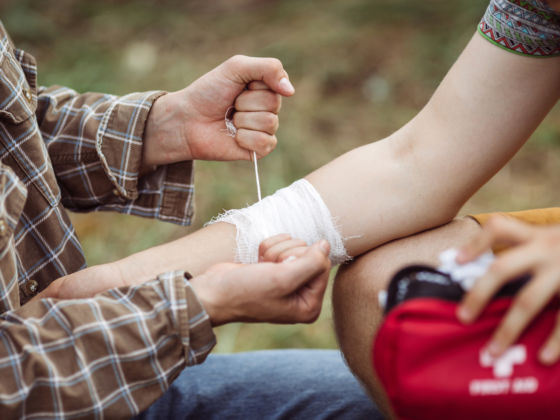WHILE ANY SYMPTOMS that involve foaming at the mouth or bleeding from the eyes should be taken extremely seriously, don’t let your guidebook’s talk of exotic parasites and virulent viruses get you panicky at every muscle ache or cough.
The key to travel health maintenance is the acceptance that you likely will get sick, the knowledge that most things are easily treatable and/or preventable, and smart preparation. Following are ten medical items you should consider packing. Of course, they don’t replace a doctor’s visit, but in case that is not possible, you’ll be glad you were prepared.
